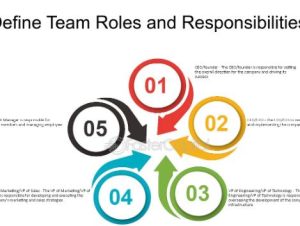How Are Team Roles Defined?
In any organization, clearly defining team roles is critical for streamlining operations and enhancing productivity. Effective team roles definition ensures that every member understands their responsibilities and how they fit into the broader objectives of the team. Let's explore how roles are typically defined and why this is so pivotal for team success.

Understanding the Framework
A strategic framework is often the first step in defining roles. This involves aligning each role with the team’s and organization's strategic goals. According to a study by the Harvard Business Review, teams that align their roles with clear strategic objectives increase their performance outcomes by up to 22%. This framework serves as a blueprint that guides the distribution of responsibilities and the expected outcomes for each role.
Role Clarity and Specifications
Role clarity is essential. Each team member needs a clear and precise description of their role, detailing what is expected of them. Research shows that teams with well-defined roles see a 15% increase in productivity. Specific duties, expected contributions, and key performance indicators (KPIs) are usually outlined to eliminate any ambiguity that might impede efficiency.
Flexibility and Adaptability
While roles should be specific, they also need to allow for some level of flexibility. This adaptability enables team members to innovate and respond to changing circumstances—a vital trait in today’s fast-paced work environments. Studies indicate that teams with flexible role definitions can adapt to changes 30% faster than those with rigid role structures.
Communication of Roles
Effective communication of roles is just as important as defining them. It’s critical that every team member knows not only their role but also the roles of their peers. This awareness facilitates collaboration and ensures smooth handoffs of tasks and responsibilities. According to a recent survey, 68% of team members believe that clear communication of roles and responsibilities significantly enhances collaboration.
Regular Review and Adjustment
Roles should not be static; they require regular reviews and adjustments to remain relevant as projects evolve and organizations grow. Data from management practices indicate that teams that revisit and adjust their roles quarterly exceed their performance targets by up to 17% more often than those that review roles annually.
Integration with Organizational Culture
Lastly, roles should be integrated with the organizational culture. This integration ensures that the roles support not just the strategic goals but also embody the values and principles of the organization. Teams that effectively integrate their roles within the cultural fabric of the organization are 21% more likely to achieve high employee satisfaction.
The Role of Leadership
Leadership plays a critical role in defining and enforcing team roles. Leaders are responsible for ensuring that roles are aligned with both the team’s needs and the individual’s capabilities and career goals. Effective leadership in role definition leads to a 25% increase in team efficiency and job satisfaction.
Conclusion: Keys to Effective Role Definition
By carefully crafting a team roles definition that aligns with strategic goals, ensures clarity, allows flexibility, communicates effectively, and adjusts as needed, organizations can create a dynamic and productive team environment. This process not only boosts productivity but also enhances job satisfaction and team cohesion, making it a critical aspect of team management.
